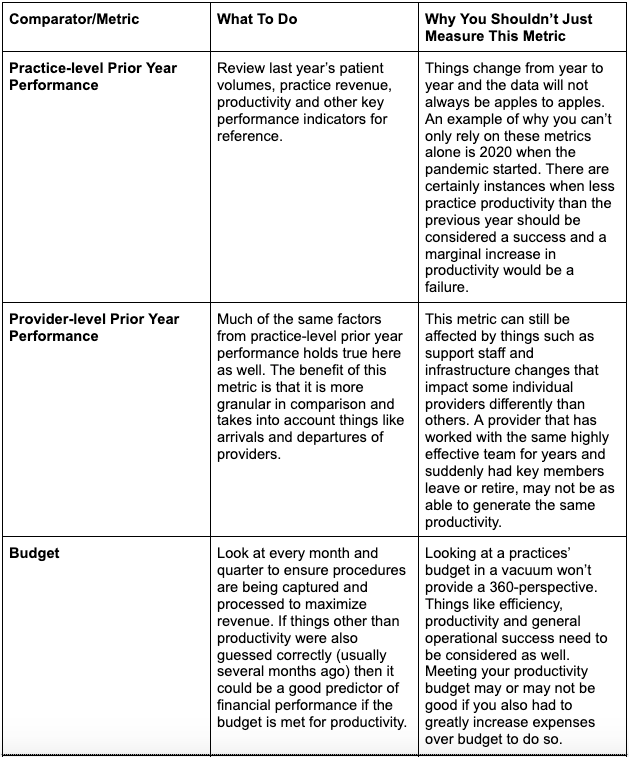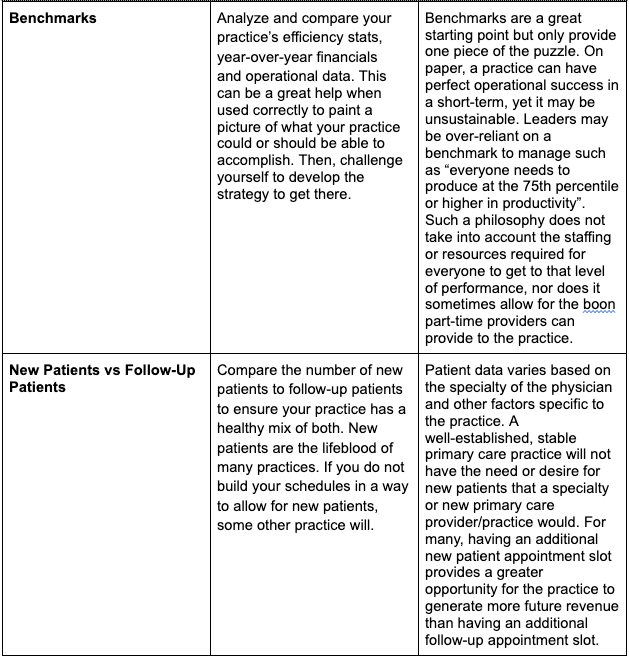Without benchmarking data, practices likely to miscalculate
Benchmarking data can give your practice insight into productivity.

A recent MGMA Stat poll found that 35% of medical practices said their productivity exceeded expectations in 2021. Although there’s definitely room for improvement, it’s interesting that many practices met their productivity goals when the pandemic, staffing shortages, limits on elective surgery and the ongoing issues in healthcare were taking a toll on everyone.
So, how should we interpret this poll and what metrics should you be using to determine your practice’s overall health? Read on for the answers — and learn tips for checking your practice’s vitals to maximize growth and performance.
Read between the numbers
Simply put, there is no absolute threshold for productivity. It really depends on your expectations. For instance, if two practices have the same level of output or activity, but one of them is expected to produce more, one of the results would likely be viewed as a failure — even though the productivity was the same.
Meeting a productivity goal is somewhat subjective by design and either the expected productivity or observed productivity may be a result of negative factors like reduced personnel, excess caseloads and misinterpretation of practice data. That’s why using an approach of “met productivity goal” alone to measure your practice's success may be flawed. It relies on isolated statistics instead of taking a holistic view from several indices at the same time. A full-picture perspective is crucial to identify trends and improve practice management strategies.
Dig into the data
When it comes to checking your practice’s pulse — there are a few key metrics that you should be keeping an eye on. These data points can help you discover potential issues and keep your practice on track for positive returns and outcomes.


By reviewing multiple data points like the ones above, you’ll have a macro perspective of your practice’s health and a better understanding of its operational and financial wellbeing. Plus, you’ll be able to hit the ground running with specific strategies for success. Key components of building an effective strategy are knowing where you are, how you are doing and where you could (and want) to go.
Create benchmarks that work
Benchmarking has become an indispensable part of modern healthcare helping to increase efficiency, quality of care, safety, productivity and more. Different practices may use different benchmarks — and that’s just fine. Every practice is unique and needs to develop metrics for success that work for them. A good place to start building a benchmark strategy is with revenue, expenses, payer mix and staffing ratios. And obviously, it’s essential to have access to the most current, accurate and trustworthy data.
Whether your practice achieved its productivity goals in 2021 or fell short — remember, that’s just one metric for success. It’s best to widen your focus and rely on data that gives you a 360-degree view of your practice. This approach will provide you with an informed perspective of the state of your practice and will empower you to identify efficiencies to save money, provide better patient care and protect employees’ wellbeing.
For resources to optimize the performance of your medical practice, visit MGMA.com.
Ron Holder, Chief Operating Officer of the Medical Group Management Association (MGMA), brings decades of experience to his role as a seasoned healthcare and medical practice executive. His background includes driving financial growth, leadership development, operational process improvement, increased employee engagement, and elevating patient satisfaction scores at healthcare organizations large and small.